Overview:
TCM2COVID documents more than 280 anti-COVID TCM formulas and over 80 NPs that refer to over 300 herbs, all from the literature and public sources. Meanwhile, TCM2COVID launches a useful webserver for querying, analyzing and visualizing documented formulas similar to those supplied by the user (formula similarity analysis). In summary, TCM2COVID provides a user-friendly and practical platform for documenting, querying, and browsing anti-COVID TCM treatments and will help in the development and elucidation of the mechanisms of action of new anti-COVID TCM therapies to support the fight against the COVID-19 epidemic.
The homepage is displayed in the following Fig 1-1:
1. Main functions of the database are provided in menu bar form (boxed in red).
2. Introduction and overview for TCM2COVID.
3. Browse the formulas, herbs and NPs data.
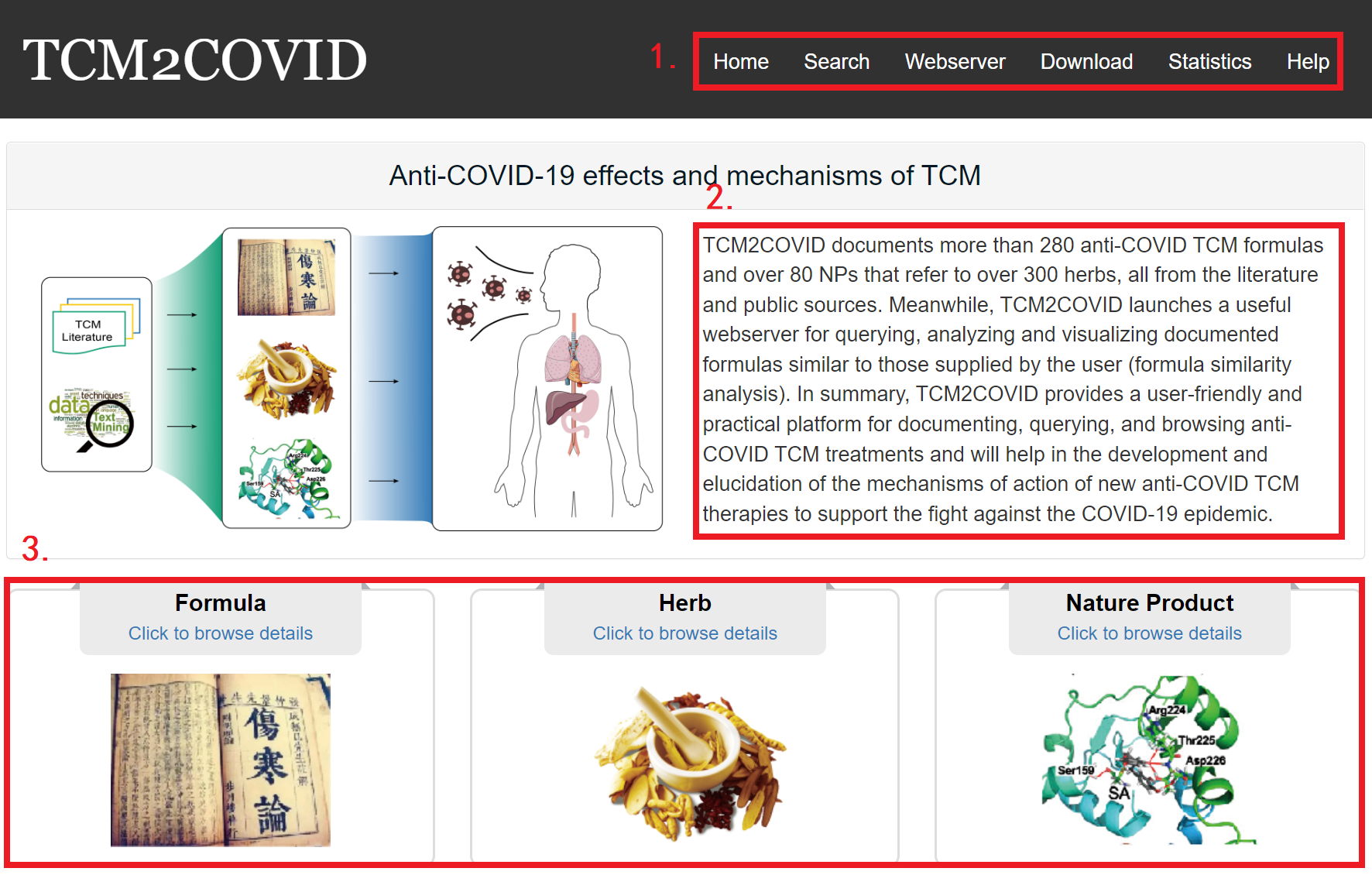
Fig 1-1. Home page
The search page is displayed in Fig 2-1:
1. Formula Search: users can enter a formula Chinese name/Pinyin name to search anti-COVID formula.
2. Nature Product Search: users can enter a NP name/formula/PubChem CID to search anti-COVID NP.
3. Herb Search: users can enter an herb Chinese name/Pinyin name/English name to search herbs related to anti-COVID formulas and NPs.
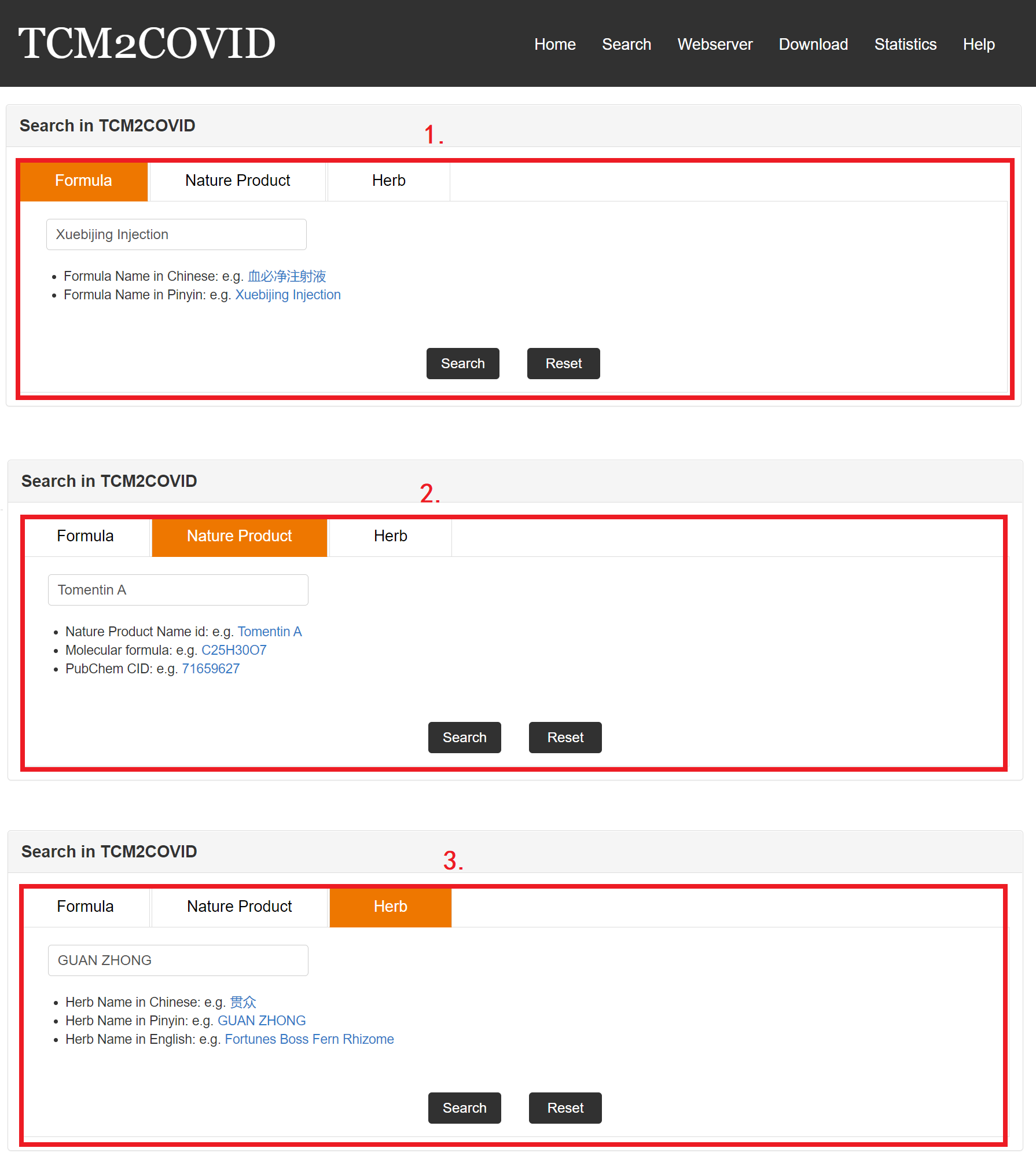
Fig 2-1. Search page
In the result page, all entries are listed with basic information including Chinese name, Pinyin name, English name, virus, etc.
The search result page is displayed in Fig 3-1:
1. The result table of formula search.
2. The result table of NP search.
3. The result table of herb search.
4. Search from the result table.
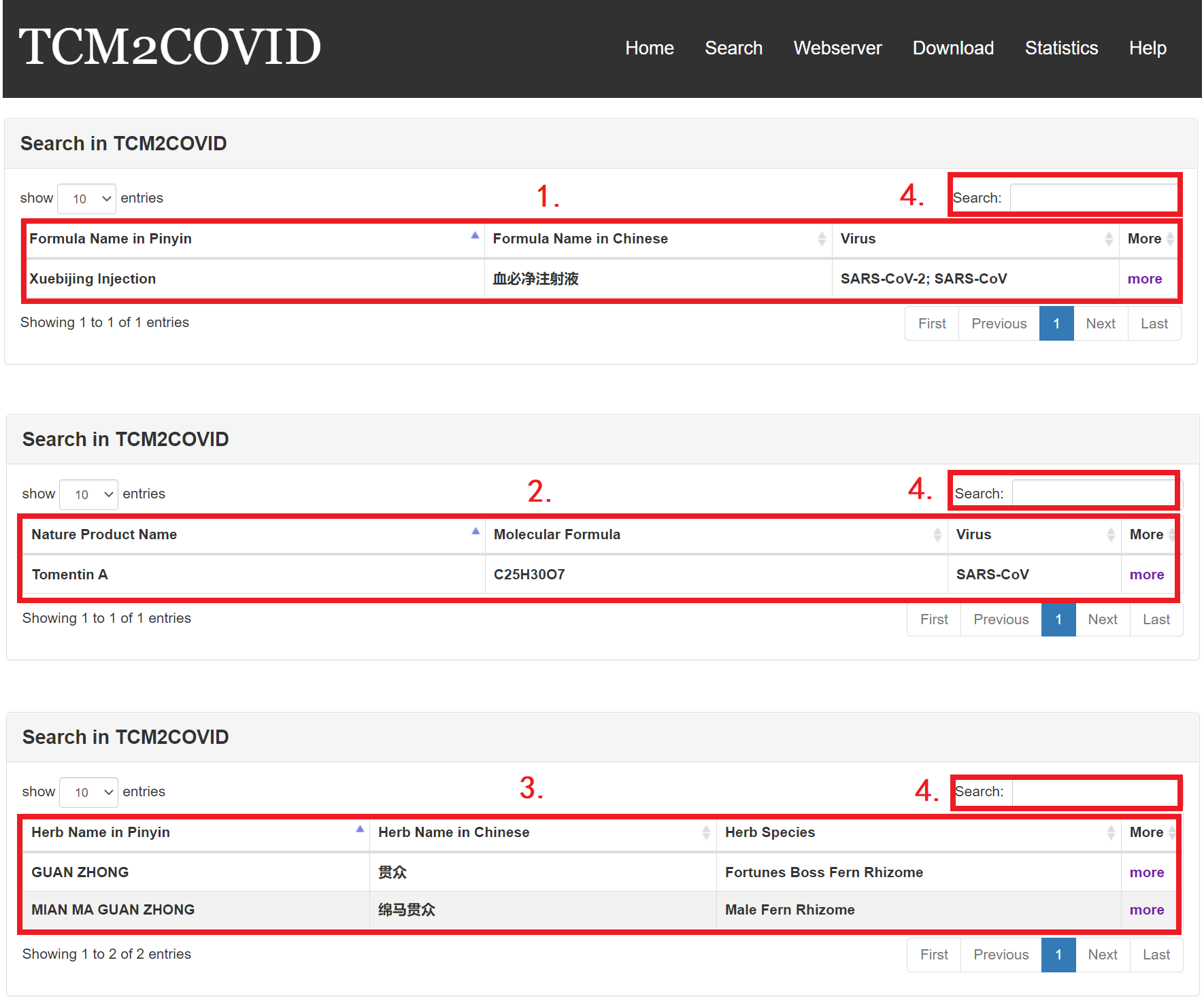
Fig 3-1. Search result page
In the detail page, you can get the detail information of anti-COVID formulas, NPs and herbs.
The detail page of formula is displayed in Fig 4-1:
1. Basic Information: including formula Chinese name, Pinyin name, English name, dosage Form and herbs contained in this formula (Chinese name) and herbs contained in this formula (Pinyin name).
2. COVID Treatment Information: including virus, range of clinical applications, IC50 (EC50) or dosage, improvement in symptoms, potential mechanism, china clinical trial registry information and in silico method.
3. The embedded network web tool: showing the herbs contained in this formula.
4. Source of the formula (publications).
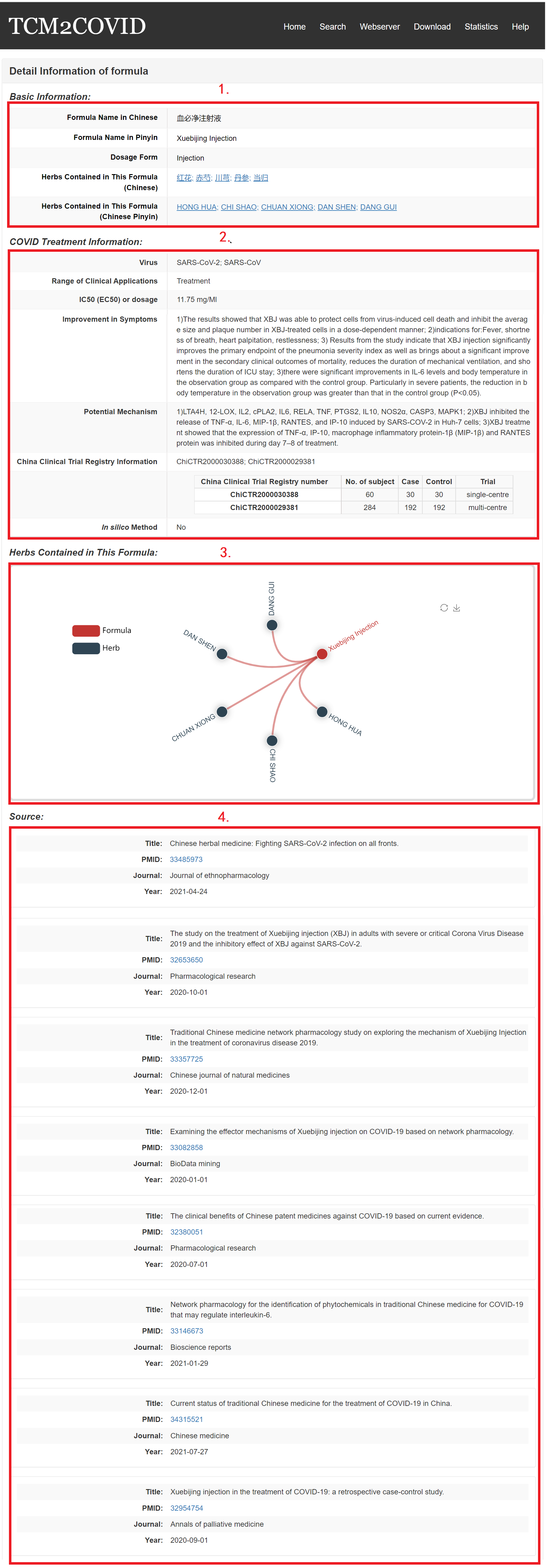
Fig 4-1. Detail page of formula
The detail page of NPs is displayed in Fig 4-2:
1. Basic Information: including NP English name, 2D-structure, molecular formula, SMILES, PubChem ID, herb containing this nature product in pinyin and in English.
2. COVID Treatment Information: including virus, tissue/cell line/body fluid, effection and dosage and in silico method.
3. The embedded network web tool: showing herbs related with this nature product.
4. Source of the NP (publications).
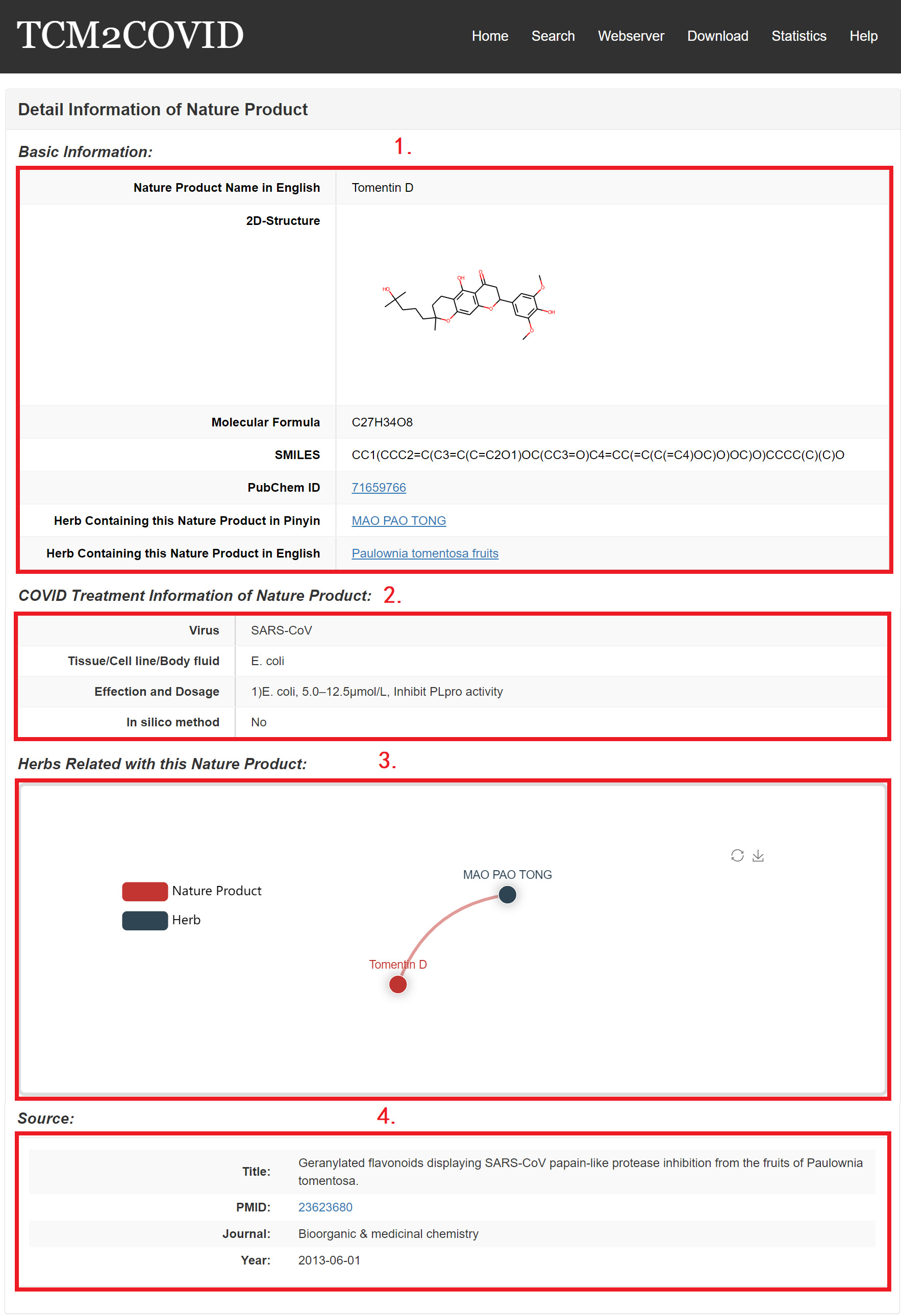
Fig 4-2. Detail page of NP
The detail page of Herbs is displayed in Fig 4-3:
1. Basic Information: including herb Chinese name, Pinyin name, English name, Latin name, properties, meridians and indication and HERB id.
2. The embedded network web tool: showing formula included this herb.
3. The related ingredients.
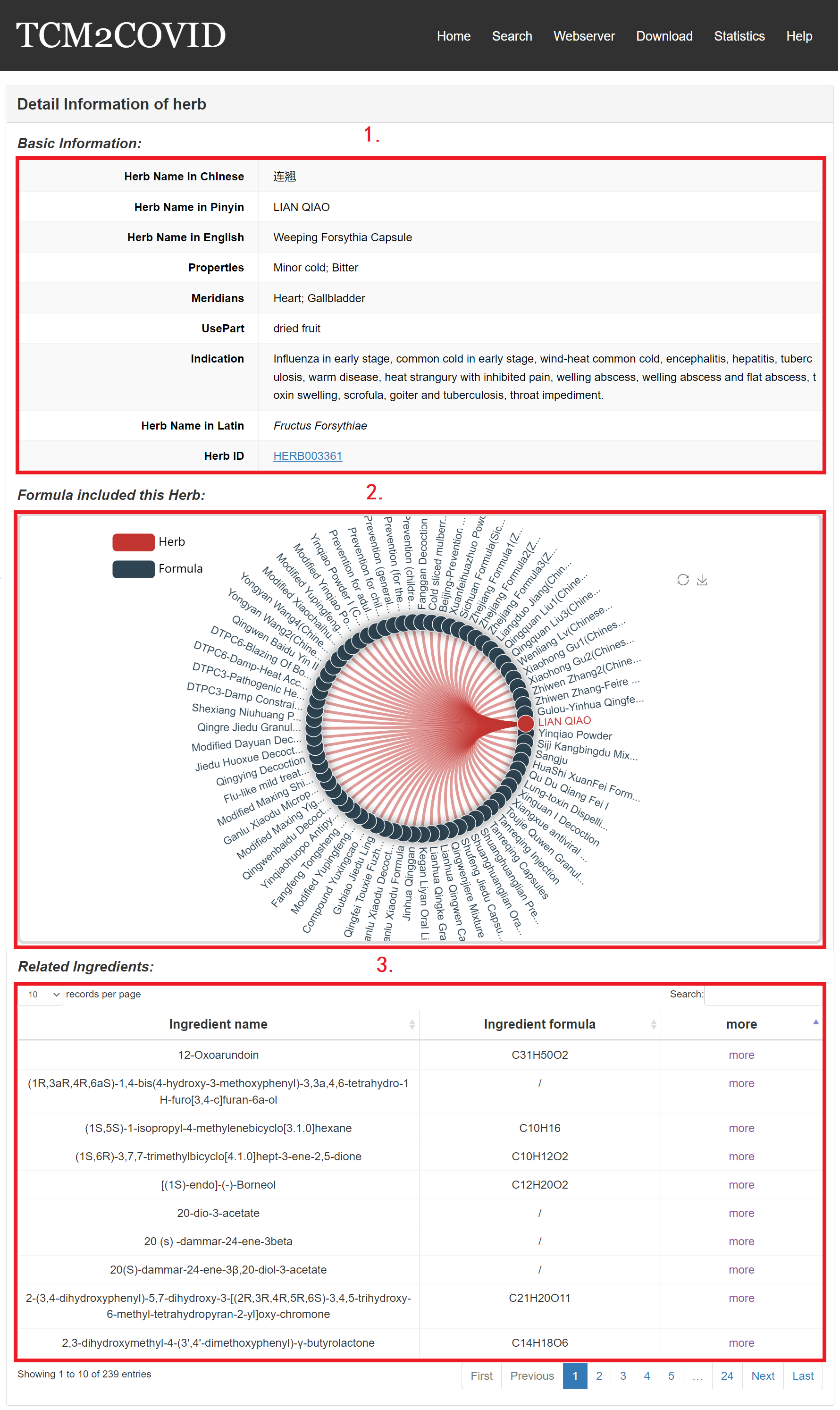
Fig 4-3. Detail page of Herb
For user convenience, TCM2COVID launches a webserver for formula similarity analysis, First, TCM2COVID quantifies the similarity between queried formula q and documented formula i using the formula similarity (FS) score, which is calculated by the Jaccard similarity coefficient:

where Lq is the herb list of queried formula q and Li is the herb list of documented formula i.
Additionally, we estimated the significance of the similarity between the queried formula and the documented formula with Fisher's exact test.
The Webserver page and result is displayed in the following Fig 5-1.
1.Filling out the herb list of the queried formula in the query window.
2.Setting he threshold of the P-value (Fisher's exact test): you can use specific threshold such as 0.05 or 0.01.
3.Setting the type of herb name fill in the query window: you can use herb Pinyin name, Chinese name, English name or Herb id.
4.The result page provides an embedded bubble chart web tool to display the results: The size of each bubble represents the FS score, and the color of the bubble represents the significance of the FS score.
5.Download the bubble chart (PDF).
6.Download the result table (TXT).
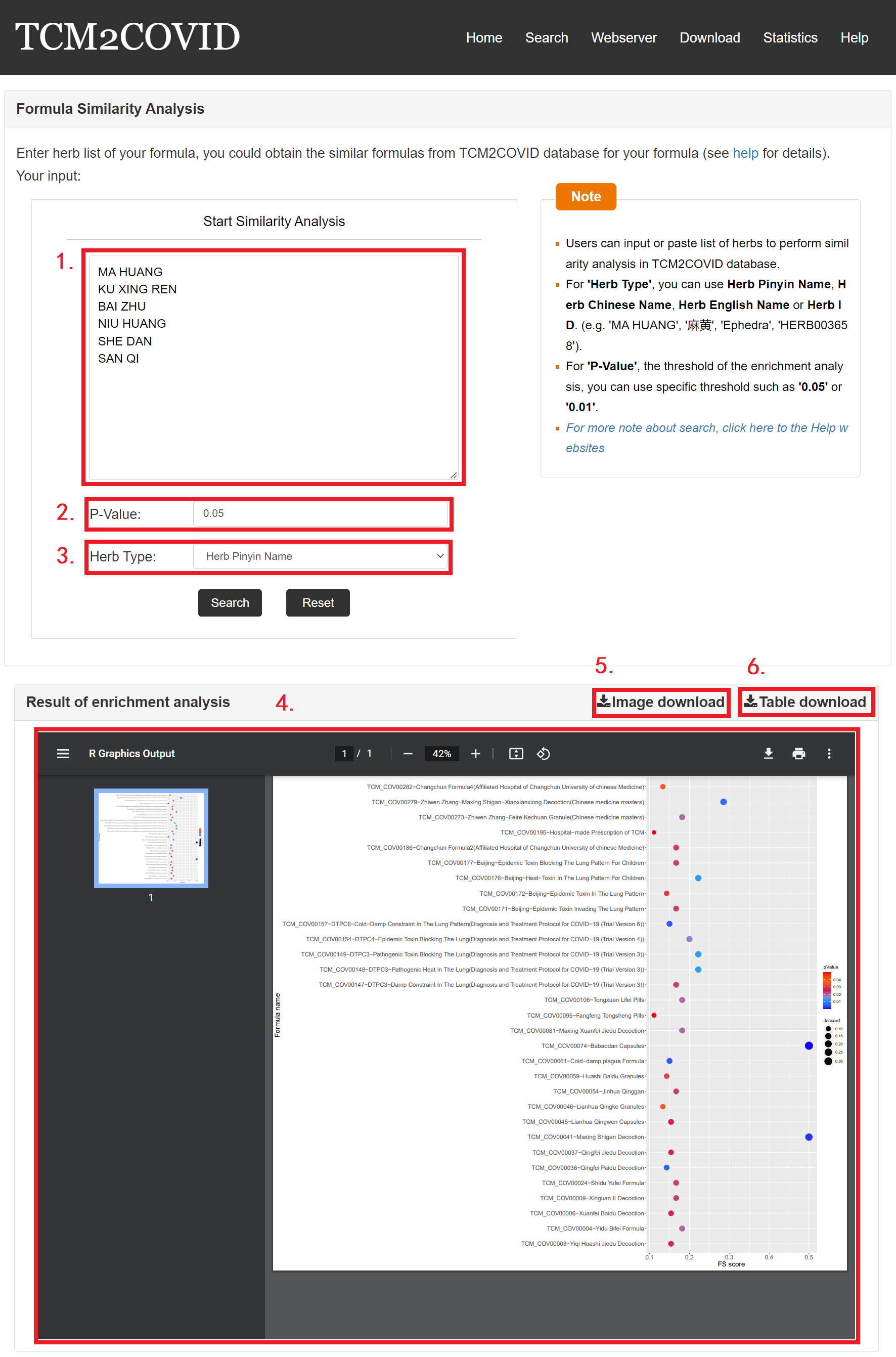
Fig 5-1. Webserver page and result of the analysis
On the Network page, the “Formula-Herb-Disease Multi-Layer Knowledge Graph Network” tool enables users to quickly and conveniently perform multi-level association analysis of the “Formula-Herb-Disease” knowledge graph network.
The visualized results are shown in Fig 6:
1. Result Download: By clicking “Result download,” users can obtain the corresponding JSON data file for the graph.
2. Legend Selection: In the legend above the graph, users can select the data to be included in the visualization to view the data they are most interested in more intuitively.
3. Interactive Highlighting: By moving the cursor over the graph, users can highlight and emphasize the interactive relationships they are interested in.
4. Herb Data Table: A table displaying the degree, closeness, and betweenness data of the herbs in the interaction network, with the table sorted in descending order by degree.
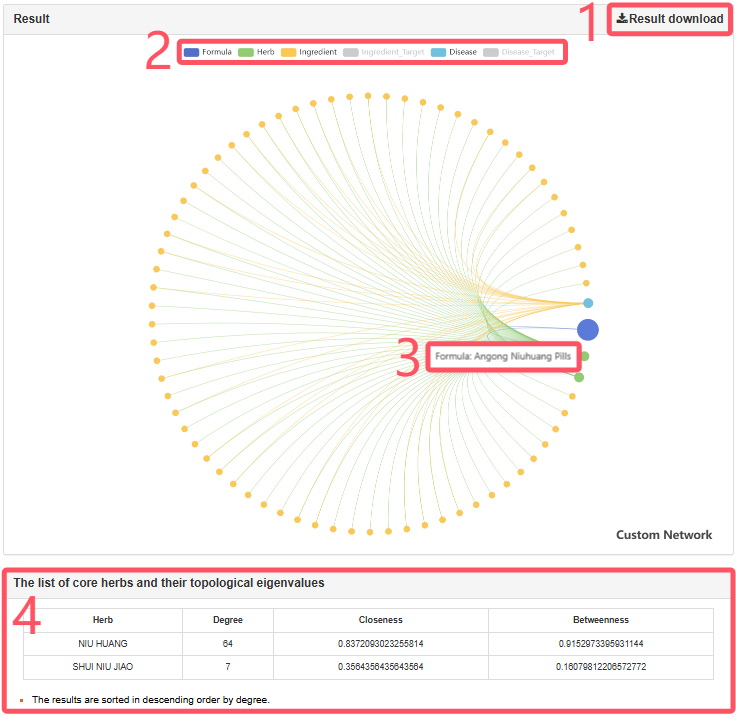
Fig 6. Visualization of Knowledge Graph Network Association Analysis Results.